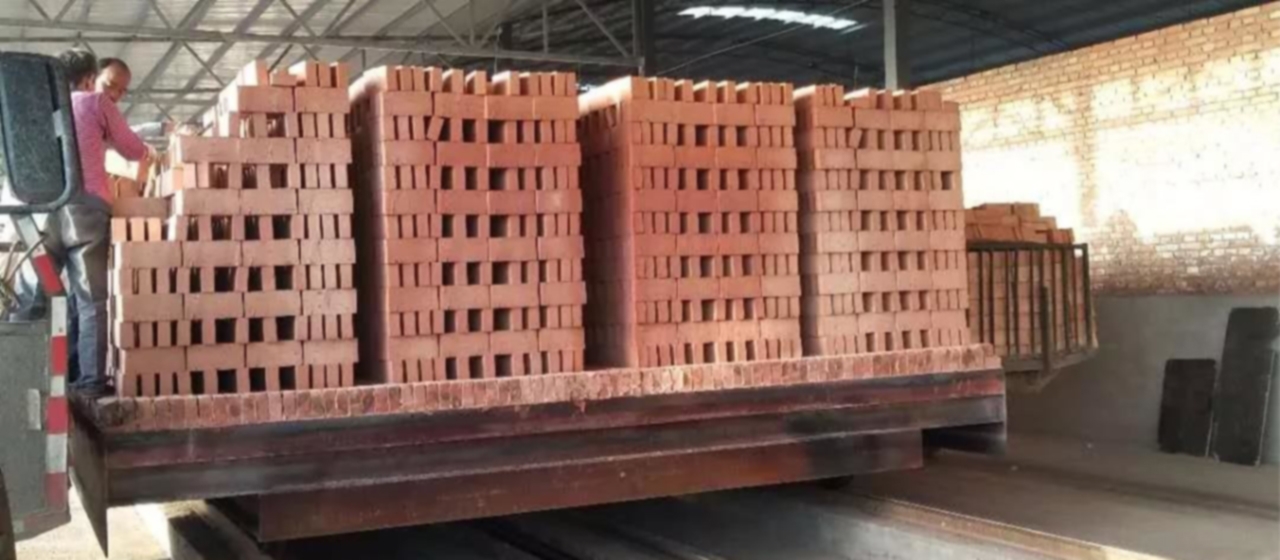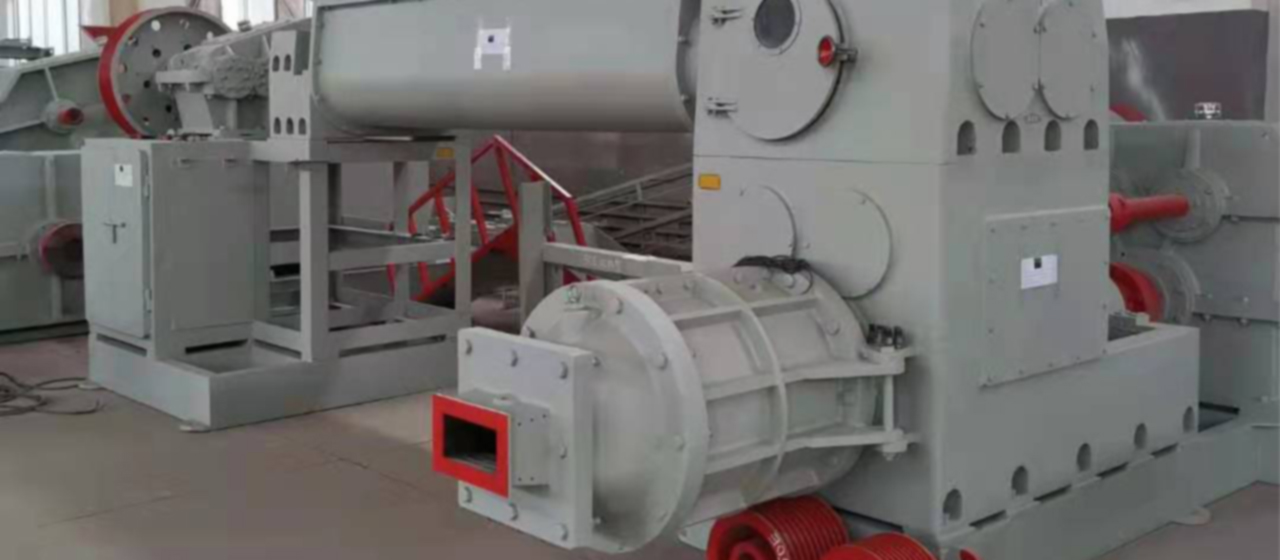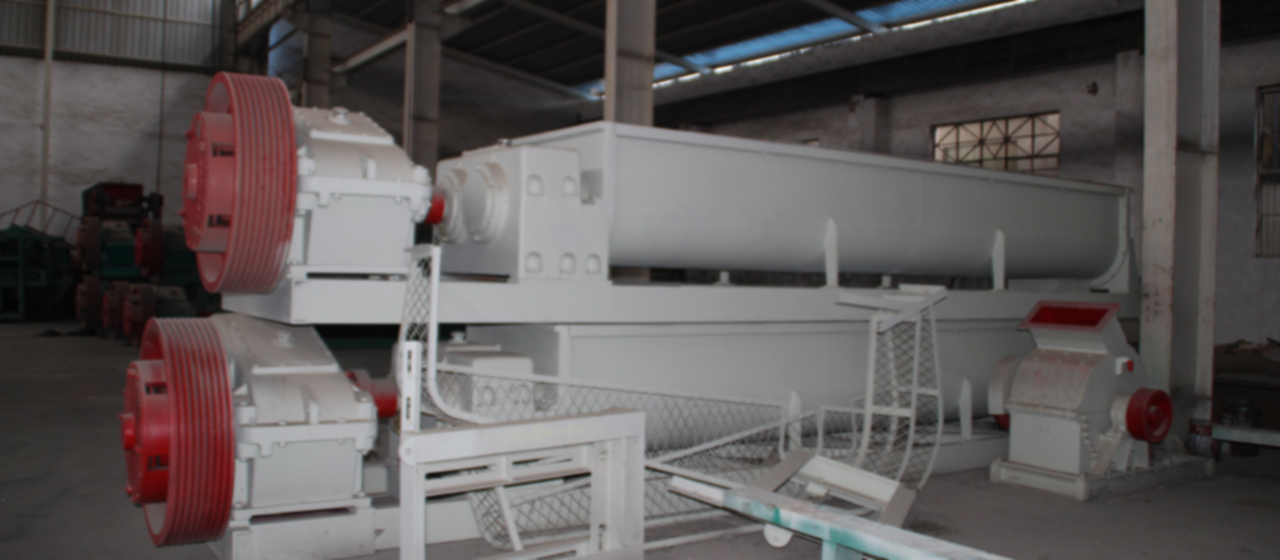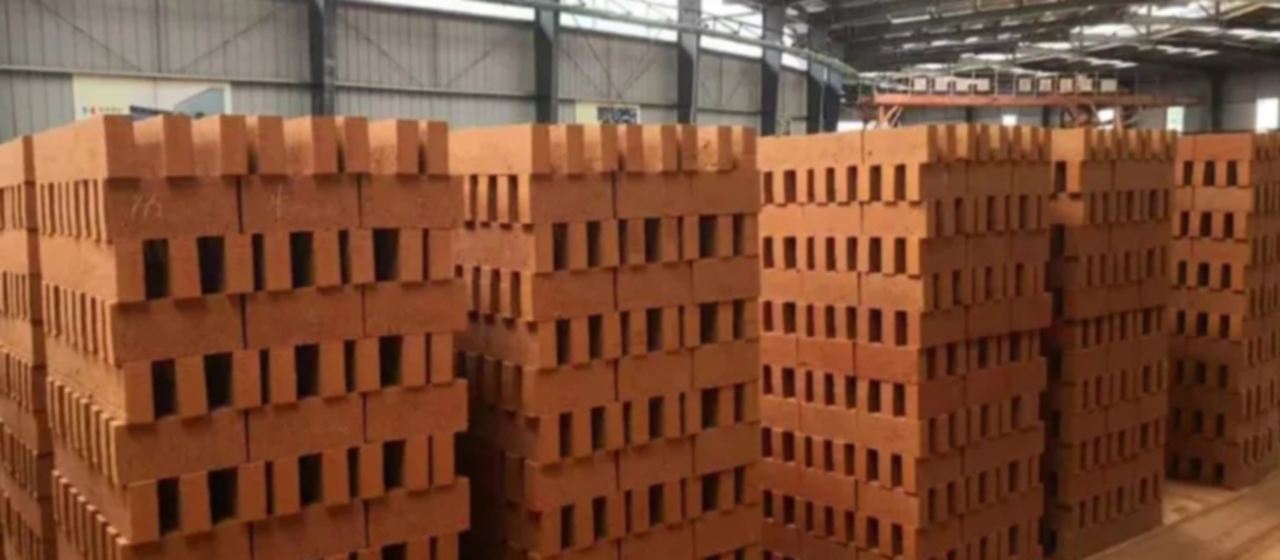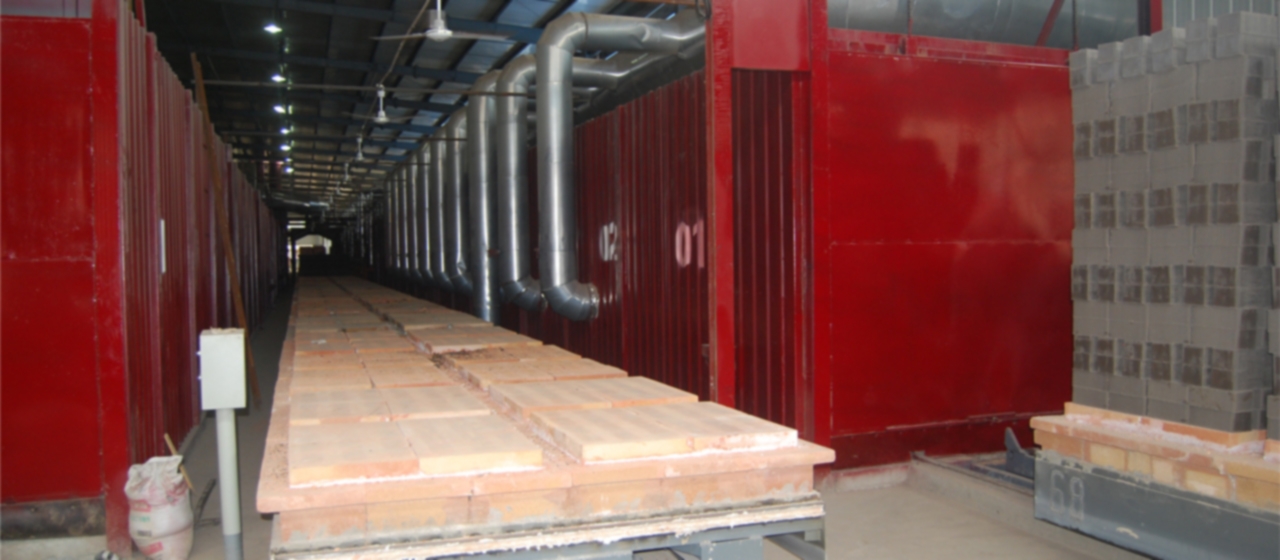Bau von Ziegelfabriken
Which type of kiln is better for building brick factories or renovating old factories
From the perspective of the development trend of the brick and tile industry, if we are building brick factories or carrying out technological renovations on old brick factories, the preferred firing equipment should be tunnel kilns. This is because compared with rotary kilns and other kilns, tunnel kilns are more in line with the requirements of national energy conservation and emission reduction policies, with higher levels of mechanization and automation. They are advanced production capacity in the brick and tile industry. Der Einsatz von Tunnelöfen kann den weiteren Abbau veralteter Produktionskapazitäten fördern und die Produktionsschwierigkeiten lösen, mit denen viele Unternehmen konfrontiert sind, die traditionelle Methoden zur Herstellung von Ziegeln verwenden.
1、 Gründe für die Wahl eines Tunnelofens
In den vergangenen Jahren, mit der schrittweisen Umsetzung von Wandrenovierungsrichtlinien in verschiedenen Provinzen und Städten, Die Umsetzung hat zugenommen. Viele Regionen haben strenge Produktionstechnologiestandards formuliert, die auf den Merkmalen der Ziegel- und Fliesenproduktion basieren, mit spezifischen Anforderungen an Produktionsanlagen und Öfen. Es wurden wirksame Maßnahmen zur Beseitigung veralteter Produktionskapazitäten durchgeführt, Produktionsabläufe verbessern, Verbesserung der Brenneffizienz, und Produktionsmethoden verändern.
1. Der erste Grund für die Wahl eines Tunnelofens ist, dass die Qualität der im Tunnelofen gebrannten Produkte stabil und hoch ist.
Mit der kontinuierlichen Überarbeitung nationaler Normen für Ziegel- und Fliesenprodukte, die kontinuierliche Verbesserung technischer Indikatoren, und die Verbesserung verschiedener Leistungsanforderungen an Produkte, Die Produktionslinien mit Drehrohröfen und einige alte Öfen weisen eine geringe Festigkeit auf, große Maßfehler, und instabile Produktqualität. Die Produktqualität liegt unter den Anforderungen nationaler Standards, und einige sind unqualifizierte Produkte. Die in Tunnelöfen hergestellten Produkte haben genaue Abmessungen, schönes Aussehen, hohe Festigkeit, und stabile Qualität, die Anforderungen der nationalen Normen vollständig erfüllen.
2. Der zweite Grund für die Wahl eines Tunnelofens besteht darin, einen technologischen Wandel in der Produktionslinie durchzuführen und das Produktionstechnologieniveau zu verbessern.
Die ursprünglichen Ziegel- und Dachziegelproduktionsbetriebe führten meist eine umfangreiche Produktion und Verwaltung durch, und das technologische Niveau der Ziegelfabriken war relativ niedrig. Mit der verwendeten Ausrüstung konnten nur die einfachsten und preisgünstigsten Produkte hergestellt werden. Der Produktionsprozess ist hauptsächlich auf Arbeitskräfte angewiesen und gehört zu arbeitsintensiven Unternehmen. Im gesamten Produktionsprozess kommen selten mechanisierte und hochautomatisierte Geräte zum Einsatz, und die meisten Unternehmen erwägen selten den Einsatz vollautomatischer Produktionsanlagen. Mit der kontinuierlichen Verbesserung der Produktionstechnologie und der schrittweisen Verbesserung der Leistung mechanischer Ziegel- und Fliesengeräte, Der Produktionsprozess von Ziegeln und Fliesen verbessert sich weiter. Mit der Vertiefung der Arbeit zur Energieeinsparung und Emissionsreduzierung, Die Anforderungen an Ofenabgasemissionen werden immer strenger. Allgemeine Öfen können den Anforderungen nicht mehr gerecht werden. Nur durch die Wahl von Tunnelöfen können die Abgasemissionen während des Produktionsprozesses den nationalen Standards entsprechen. Die Grundmerkmale des Tunnelofens sind die kontinuierliche Produktion, kurzer Brennzyklus, große Leistung, gute Qualität, hoher Wärmenutzungsgrad, gute Abwärmenutzung, und Kraftstoffeinsparung. Nicht nur beim Brennen ist die Bedienung einfach, aber auch die Be- und Entladevorgänge werden außerhalb des Ofens durchgeführt, Die Arbeitsbedingungen der Bediener werden erheblich verbessert und die Arbeitsintensität verringert. Wenn der Anleger über ausreichende Mittel verfügt, Es ist förderlich für die Implementierung automatisierter Vorgänge zum Palettieren und Entladen von Ziegeln, Dies ist die beste Wahl für Ziegel- und Fliesenunternehmen, um ihre Produktionslinientechnologie zu modernisieren und den Mechanisierungs- und Automatisierungsgrad des Produktionsprozesses zu verbessern.
3. Die Reduzierung des Einflusses menschlicher Faktoren auf die Produktion ist der dritte Grund für die Wahl eines Tunnelofens
Im Produktionsprozess, es wird viel Arbeitskraft aufgewendet, und es gibt Operatoren in jedem wichtigen Link. Die meisten Produktionsprozesse basieren auf der Erfahrung der Bediener, und ohne genaue Messung, Bediener können nicht nach genauen Prozessparametern arbeiten. Dies führt zu einer starken Zufälligkeit in der Produktion, und die Produktion kann nicht nach vernünftigen Parametern ablaufen. Menschliche Faktoren haben einen erheblichen Einfluss auf die Produktionsleistung, Produktqualität, production efficiency, and enterprise benefits. In the new production process, it is advisable to use highly mechanized and automated equipment as much as possible. Mechanical parts should never be used manually, and semi-automatic equipment should never be used in areas where automated equipment can be used, in order to minimize the impact of human factors on production. For the firing equipment, various operations of the tunnel kiln can be automatically controlled, including lifting the kiln door, automatic lifting of the top car machine, automatic return of the traction machine, automatic control of the fan, automatic monitoring of the kiln temperature, automatic adjustment of the kiln temperature, automatic fuel addition, etc., without the need for manual operation. Es ist der am besten geeignete Ofen, der die Anforderungen einer vollautomatischen Produktion erfüllen und die Auswirkungen menschlicher Faktoren auf die Produktion reduzieren kann, was mit anderen Brennöfen nicht zu vergleichen ist.
4. Die Verbesserung der Arbeitsproduktivität und die Senkung der Produktionskosten sind der vierte Grund, sich für Tunnelöfen zu entscheiden
Die Ziegel- und Fliesenindustrie ist eine arbeitsintensive Branche, Und jetzt werden die Arbeitsressourcen immer knapper, und die Zahl der Mitarbeiter nimmt stetig ab. Nur wenige junge Menschen sind bereit, sich in dieser Branche zu engagieren, Dies führt dazu, dass die Mehrheit der Beschäftigten in dieser Branche zwischen 5 und 10 Jahre alt ist 40 und 50, mit einer relativ geringen Arbeitsproduktivität. Zur selben Zeit, Die Personalgehälter steigen ständig, und die Personalkosten werden immer höher. Wenn für die Produktion eine Produktionslinie mit hoher Mechanisierung und Automatisierung verwendet wird, Um den Personaleinsatz zu reduzieren, sollten so weit wie möglich Maschinen statt manueller Vorgänge eingesetzt werden. Dadurch können nicht nur die Arbeitskosten im Produktionsprozess gesenkt werden, sondern senken auch die Ausschussrate und sorgen für eine stabile Produktqualität. Der Tunnelofen ist genau eine solche Brennanlage, die manuell oder ohne manuelle Bedienung betrieben werden kann, Vollautomatisch. Dies reduziert nicht nur den Einsatz von Arbeitsressourcen, sondern senkt auch die Personalkosten in der Unternehmensproduktion, sondern sorgt auch für eine stabile Produktqualität und Leistung auf der Produktionslinie.
2、 Worauf Sie bei der Auswahl eines Tunnelofens achten sollten
Tunnelöfen sind zweifellos eine sehr gute Brennanlage in der Ziegel- und Fliesenindustrie, aber wenn nicht richtig ausgewählt, es kann immer noch nicht seinen optimalen Nutzungseffekt erzielen, und vermittelt den Menschen sogar die Illusion, dass Tunnelöfen nicht einfach zu bedienen seien, kann nicht benutzt werden, und anderen Öfen unterlegen, was dem Ruf des Tunnelofens schadet.
1. Wählen Sie ausgereifte technologische Lösungen, um sicherzustellen, dass die Produktionslinie den Standards entspricht und die Produktionskapazität erreicht
Bei Verwendung eines Tunnelofens zum Brennen von Ziegeln, Die verschiedenen in der Produktion verwendeten Parameter sollten auf der Grundlage der grundlegenden Eigenschaften der Rohstoffe bestimmt werden. Die Brennleistung eines Ofens wird durch die verschiedenen Leistungsindikatoren der gebrannten Produkte bestimmt, die den Anforderungen nationaler Normen entsprechen, anstatt nur eine bestimmte Menge zu brennen, um die Leistung des Ofens zu bestimmen. Einige im Ofen gebrannte Produkte sind an der Oberfläche nur 3 bis 4 mm dick und im Inneren nicht vollständig verbrannt. Such products that do not meet the requirements of national standards cannot be used as a basis for calculating the output of tunnel kilns. Die Länge, width, and height dimensions of a kiln are calculated based on its output. Bei der Berechnung der Länge, width, and height dimensions of a kiln, factors such as the heating and cooling rate of the raw materials, die Brenndauer der Rohstoffe, the highest firing temperature, and the range of firing temperatures should be considered. Auch der Tunnelofen sollte über ein komplett funktionierendes System verfügen, and various parameters of the working system must be calculated in detail to ensure the normal operation of the tunnel kiln, achieve the goal of correct construction and use of the tunnel kiln, and ensure that the tunnel kiln meets the standards and reaches production during the firing process.
Heutzutage, the construction of tunnel kilns can be described as “chaotic”. Verschiedene Ofenbauunternehmen sind nach dem Regen wie Pilze aus dem Boden geschossen, und verschiedene Experten sind nacheinander erschienen, Einstieg in den Markt des Ziegel- und Ziegelofenbaus mit der Dynamik von “desto mutiger die Leute, desto größer ist die Leistung des Ofens”. Konzentrieren Sie sich genau auf das Konzept von “geringe Investition und hohe Leistung”, Unser Ziel ist es, die Mentalität von Anlegern zu erfassen, die Prioritäten setzen “weniger Investitionen und mehr Output”. Unabhängig von der Art der verwendeten Rohstoffe, Wir werden die Situation ausnutzen, in der Investoren nicht verstehen, wie sie sie für das Projekt produzieren sollen. Es gibt auch eine Reihe globaler Zeichnungen, Unabhängig von den für die Produktion verwendeten Rohstoffen werden das gleiche Verfahren und derselbe Ofen verwendet. Das Ergebnis ist sehr tragisch, und viele Investoren können nur Tunnelöfen mit einer Breite von 3,6 m erreichen 50% of the claimed production at the time of construction, or even less. Some so-called experts cannot even understand the basic principle of the kiln, the firing time and temperature range of the raw materials, and the production quality of the tunnel kiln built is very poor, resulting in a final production yield of only 50% zu 60% for the kiln constructed by the investor.
2. Reasonably layout the tunnel kiln system to ensure stable firing
Gemäß der Definition von Tunnelofen, it should be equipped with ventilation system, Kraftstoffverbrennungssystem, car inlet system, und Dichtungssystem, which constitute the working system of tunnel kiln. The close coordination of various systems is necessary to ensure the normal operation of the tunnel kiln. According to the requirements of the firing atmosphere inside the kiln, Anzahl und Standort der am Ofen verwendeten Ventilatoren sind festgelegt. Der Winddruck der Ventilatoren wird anhand der Form der Brennprodukte und der Dichte des Ofens bestimmt, und die Ventilationsmenge der Ventilatoren wird anhand der Leistung bestimmt. Die Methode des Kraftstoffverbrennungssystems, die Art der verwendeten Verbrennungsausrüstung, und die Anordnung und Menge der Verbrennungsausrüstung sollte auf der Grundlage der Art des verwendeten Brennstoffs bestimmt werden, um eine möglichst gleichmäßige Temperatur im Ofeninneren zu gewährleisten. Zu den Hauptinhalten des Eingabesystems gehören die Eingabemethode und das Eingabezeitintervall. Das Dichtungssystem umfasst die Abdichtung zwischen Ofenwagen und Ofenkörper, die Abdichtung zwischen Ofentür und Ofenkörper, die Abdichtung zwischen Rohrleitung und Ofenkörper, und die Abdichtung zwischen den Ofenwagen. Der Zweck all dieser Siegel ist nur einer, Dadurch soll das Innere des Tunnelofens von der Außenatmosphäre isoliert werden, Schaffen Sie einen guten Brennraum im Tunnelofen, and burn semi-finished products into finished products inside the kiln. The division of the three zones during the firing process of the tunnel kiln should be based on the basic properties of the raw materials and should not be arbitrarily divided, in order to ensure the normal production and stable operation of the tunnel kiln.
The use of tunnel kilns within the industry is a bit chaotic now, and it is common to set up tunnel kiln systems arbitrarily. Many nominal tunnel kilns actually use only one shell of the tunnel kiln, which is essentially a rotary kiln. Jedoch, the loading of the rotary kiln is placed outside the kiln, resulting in a decrease in firing quality. The reason for this is still unknown. Some are obviously rotary kilns, but they are called tunnel kilns. Various new types of kilns, such as movable tunnel kilns, rotary tunnel kilns, and rotary tunnel kilns, are actually rotary kilns. They fully utilize the working system and operating methods of rotary kilns, and the quality of the fired products is comparable to that of rotary kilns, and some are even inferior to rotary kilns. This type of kiln can only be used in areas with higher temperatures in the south, and for northern provinces, it cannot be produced in winter. Compared to tunnel kilns of the same size, the investment in this type of kiln only reduces the kiln car cost of general tunnel kilns, but its firing output is only 50% of that of tunnel kilns, or even lower. But it is this kind of kiln that claims to be a high-tech product and is widely promoted, Das erinnert die Leute an einen Code-befeuerten Drehrohrofen, der vor ein paar Jahren beworben wurde, was auch als fortschrittliche technologische Errungenschaft bezeichnet wurde. In nur wenigen Jahren, Es gibt noch einige Unternehmen in der normalen Produktion, und Zeit ist nicht der falsche Prüfstein. Ich hoffe, dass sich diese Situation in der Branche nicht wiederholt.
3. Die Bedeutung von Ofenwagen erkennen und eine stabile Qualität der gebrannten Produkte sicherstellen
Ofenwagen sind unverzichtbare Geräte im Produktionsprozess von Tunnelöfen, und sind auch entscheidende Ausrüstung für die Leistung und den normalen Gebrauch von Tunnelöfen. Damit der Ofenwagen die Rolle einer Schlüsselausrüstung spielt, Der erste Schritt besteht darin, eine gute Abdichtung zwischen dem Ofenwagen und dem Tunnelofenkörper aufrechtzuerhalten, wodurch das Innere und Äußere des Ofens vollständig isoliert wird, preventing cold air from entering the kiln at will, and preventing hot air from leaking into the outside of the kiln, ensuring a smooth firing process inside the kiln. Zweitens, the sealing between kiln cars should also be secure, as mentioned earlier. Drittens, the kiln car should run smoothly, which can avoid phenomena such as kiln overturning, ungleichmäßiges Brennen, und Schwierigkeiten beim Einsteigen in das Auto. Fourthly, the insulation layer on the kiln car is very important. If the insulation effect of the kiln car is good, it can make the temperature inside the kiln tend to be consistent, the quality of the fired products uniform, and the color is the same. If the insulation effect of the kiln car is not good, it will cause a large temperature difference between the upper and lower parts of the kiln, and the fired products will be cooked on the top and cooked on the bottom or burnt on the top and cooked on the bottom. Zusamenfassend, the product quality is uneven and the color difference is significant.
Due to the fact that kiln cars are a relatively large investment project during tunnel kiln construction, some investors, in order to save investment, arbitrarily change the material and thickness of the insulation layer of the kiln cars, resulting in a decrease in their insulation performance. Some kiln companies, in order to earn more profits, also replace the insulation materials of the kiln cars with non insulation materials or reduce the thickness of the insulation materials. The negative consequences of this are not only the large temperature difference inside the kiln and the significant difference in the quality of the fired products, but also the high temperature under the car, which exacerbates the damage to the kiln car bearings and steel structure, and affects the service life of the kiln car. Some factories often encounter problems with kiln cars within less than a year of construction, requiring replacement of bearings. This not only exacerbates the increase in production costs, sondern verändert auch das Verständnis von Tunnelöfen, leading to a perception that tunnel kilns are not as good as other kilns. In der Tat, the root lies in the insulation layer of the kiln car, without addressing the seemingly simple insulation layer problem. Some kiln cars do not reduce the thickness and material of the insulation layer, but the insulation effect is still very poor. The essence is that there is a deviation in the use of insulation materials, using good things but not playing the role of good things. Many industry colleagues have asked me why some tunnel kiln cars have temperatures as low as 40 ℃~50 ℃, and people can conduct inspections smoothly under the cars, while others have high temperatures, and people cannot enter the cars at all. The truth is actually very simple, it is caused by the difference in the insulation layer of the kiln car.
3、 Issues to be paid attention to during tunnel kiln construction
The performance of tunnel kilns not only depends on the completeness of the design, but also has a close relationship with construction. The quality of each construction step affects the quality and performance of tunnel kilns.
1. Baumaterialien müssen gewährleistet sein
In the process of kiln design, various material properties and usage requirements were considered, and the usage location and thickness of the materials were calculated. In order to ensure construction quality, the location and amount of materials used shall not be changed arbitrarily during the construction process, nor shall the variety and quality level of materials used be changed. If substitution is required, Der Festigkeitsgrad des Strukturmaterials muss höher sein als der des ursprünglichen Konstruktionsmaterials, and the thermal conductivity of the insulation material to be replaced must be lower than that of the original material used.
2. Konstruktion nach Designvorgaben
In the use of tunnel kilns, full consideration was given to the technical requirements that should be achieved during the construction process, the difficulty of construction, and the solutions to be taken. Many specifications and standards are used in the design, including national level standards and specifications, provincial and ministerial level standards and specifications, local level standards and specifications, and industry standards and specifications. Specific requirements are proposed for each part in the construction requirements, which are in accordance with the construction specifications and standards. If any changes are required, they must be made in accordance with the corresponding provisions of the specifications and standards, and must not be changed arbitrarily. The materials used for construction are generally selected from materials published in national standards. If the specifications and models of materials need to be changed, they should be compared with national standards and replaced with materials with higher performance in the original design.

